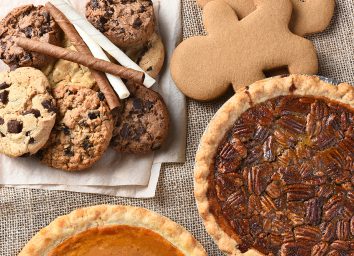7 Best Slimming Foods to Lose Your Holiday Gut
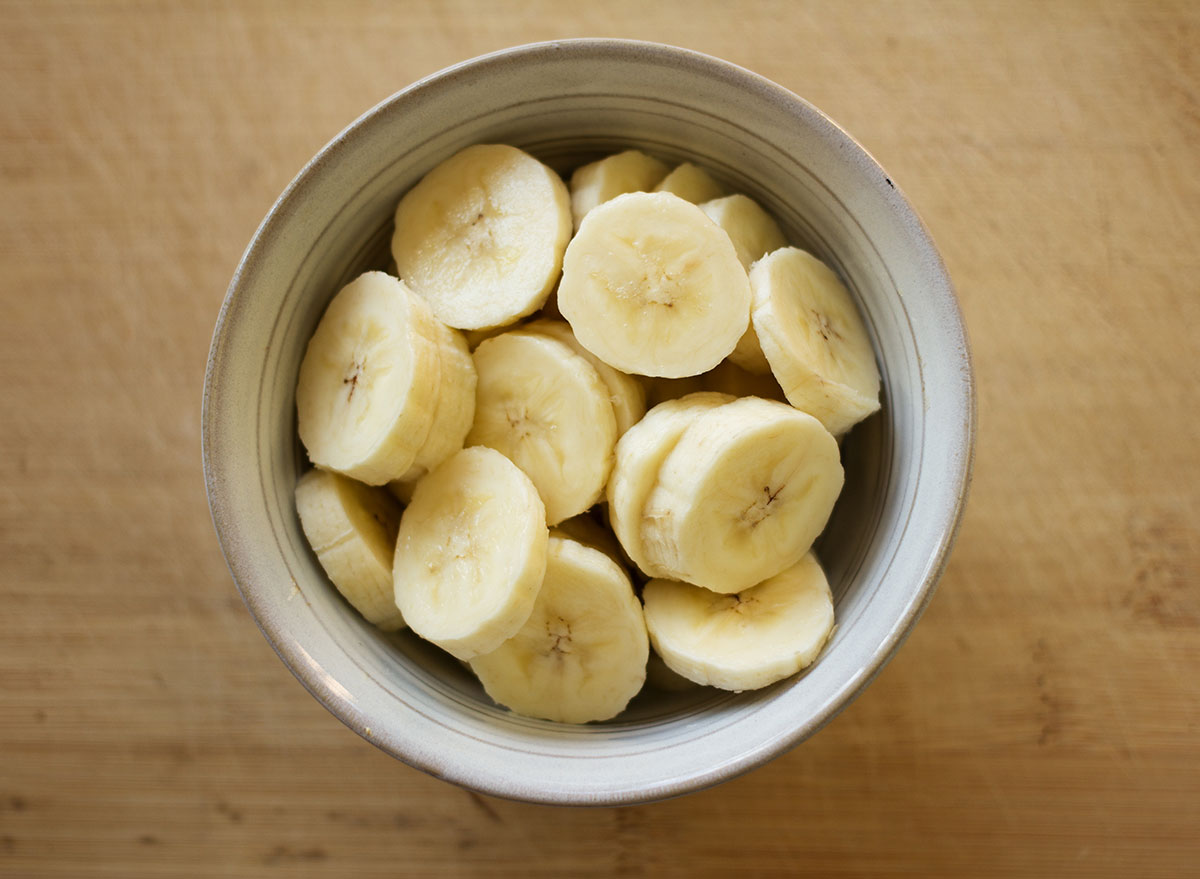
Indulging during the holidays comes with the territory. If you find that eating and drinking too much has left its mark on your midsection, you're not alone. While there is no magic bullet for losing belly fat, including certain nutritious, delicious, and, most importantly, slimming foods can help.
Once the holiday season is behind you, your thoughts might turn to banishing that holiday gut you acquired from weeks of overdoing it on seasonal goodies. While it's OK to cut back on food, resist the urge to adopt a drastic diet that slashes calories, restricts certain foods or food groups, or all of the above. Eating skimpy, unsatisfying meals, and even skipping snacks will backfire, leaving you feeling defeated about getting back in shape.
Instead, include these seven slimming foods in a balanced eating plan to minimize hunger while blasting belly fat. And while you're at it, try out these 21 Best Healthy Cooking Hacks of All Time.
Salmon
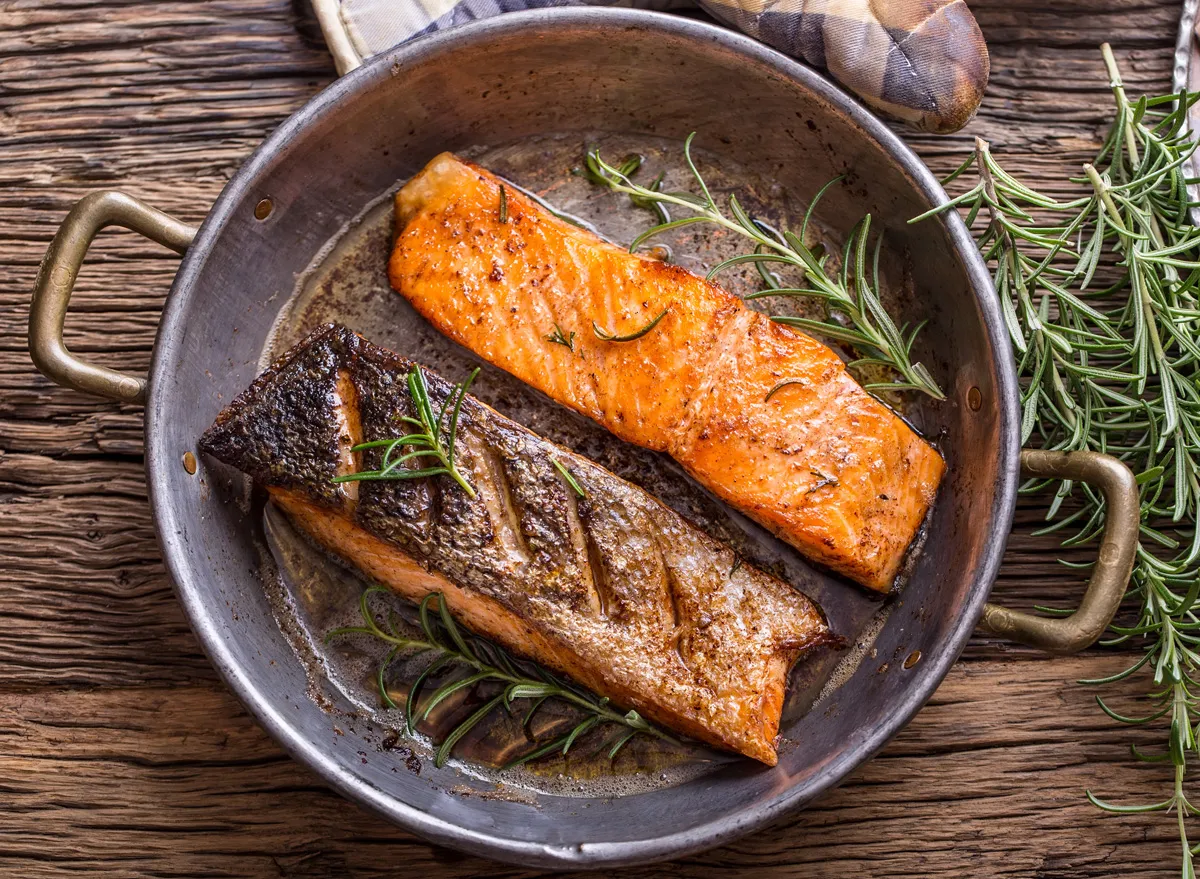
Salmon packs protein, which helps you feel fuller for longer because it takes more time to break down. And, because protein is slightly harder to digest, your body uses more calories in the process, which can contribute to weight loss. It's a stellar source of leucine, too, the amino acid that stimulates muscle tissue production. Daily leucine intake combined with regular resistance training builds muscle, which burns more calories than fat.
Salmon also harbors vitamin D, an added perk for exercisers. Low levels of vitamin D in the blood can sap energy levels, making it difficult to muster the enthusiasm to work out on a consistent basis. Three ounces of cooked salmon serves up 23 grams of protein, about the minimum you should eat at each meal, and nearly the entire suggested daily amount of vitamin D.
How to enjoy: Grilled or roasted, in salmon burgers, and in salads and sandwiches. Canned salmon is always a good idea, too
Greek Yogurt
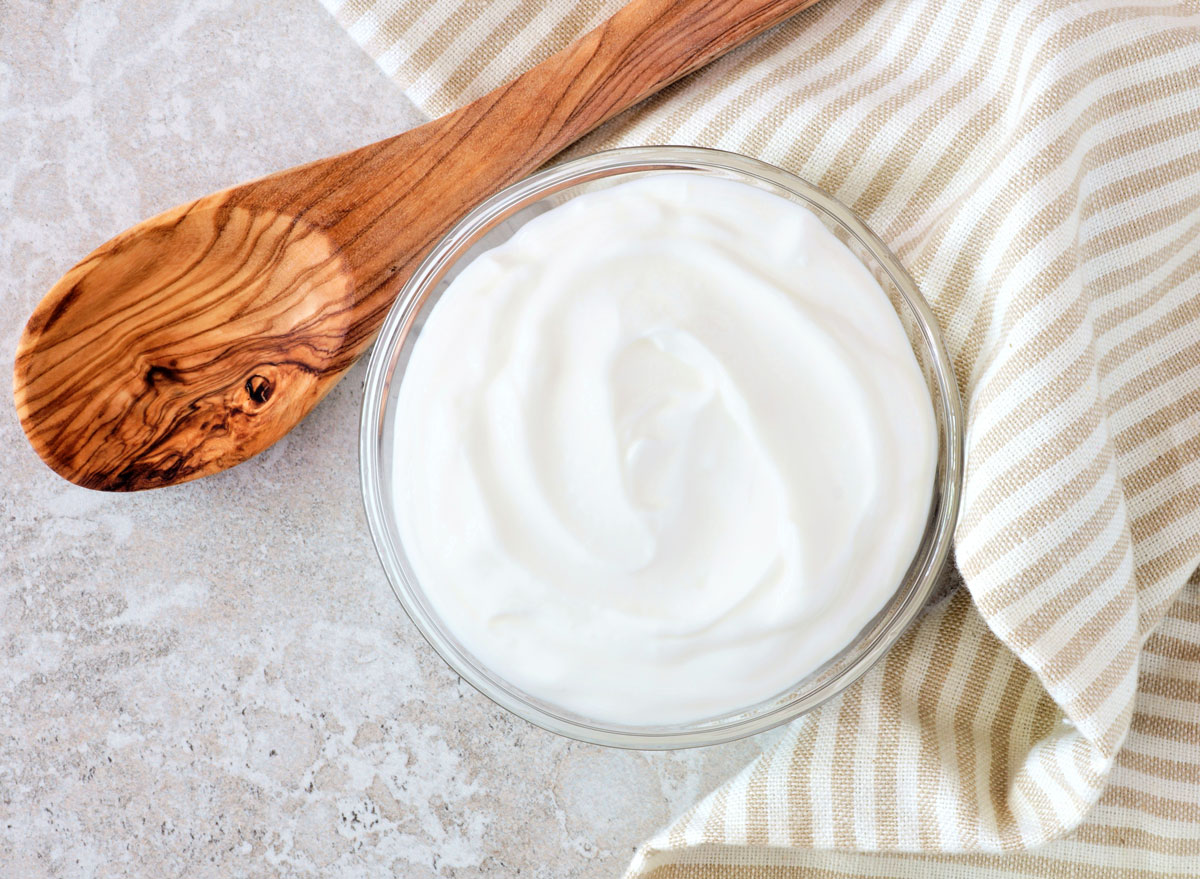
Like salmon, yogurt provides protein and leucine. Not all yogurt is the same. Greek yogurt has about twice as much protein—12 grams per 1/2 cup —as the regular kind, which makes it more filling.
As part of a balanced eating plan, a steady intake of yogurt may protect you from gaining belly fat. See, yogurt is made from milk fermented with bacterial cultures that contain Lactobacillus bulgaricus and Streptococcus thermophilus. Yogurt may also contain additional bacteria, such as other strains of Lactobacillus, and Bifidobacterium species. Yogurt produced with these bacteria helps populate your gut with beneficial microbes associated with easier weight control. Be sure to look for yogurt with the Live & Active Cultures (LAC) seal from the National Yogurt Association to be certain it has additional cultures.
How to enjoy: Use plain, fat-free Greek yogurt for smoothies, dips, and snacks. Sweeten yogurt with fruit or the sweetener of your choice. Keep in mind kefir, drinkable yogurt, and cottage cheese with live active cultures offer similar health benefits.
Almonds
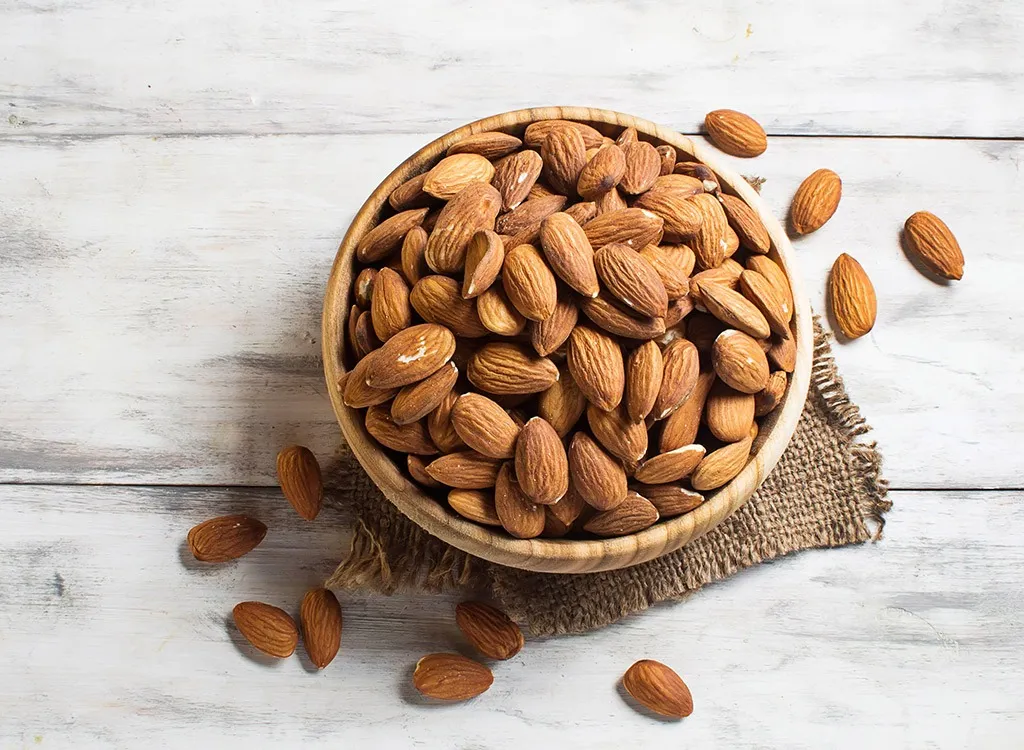
Snacking is not off-limits for reversing holiday weight gain, especially when it involves almonds. Almonds, and certain other nuts, share a secret.
USDA researchers have discovered that just two-thirds of the calories in whole unroasted almonds are available to the body. That means almonds have fewer calories than once thought: one ounce contains 129 calories.
It appears that the body does not absorb the fat in almonds as easily as it does from other foods. It's possible that the rigid structure of almonds locks in some of the fat, preventing it from being digested and used for its calories. The researchers found the same holds true for other nuts, including walnuts, although to a lesser extent.
In addition to being delicious and satisfying, one ounce of almonds supplies half of the daily suggested intake for vitamin E, an antioxidant that protects cells, and 13% of the fiber you need every day. Fiber promotes eating satisfaction so you feel less hungry on fewer calories. Nearly all the fat in almonds is heart-healthy, too.
Something else to note—cooking and grinding almonds liberates more calories for digestion. This means you'll want to choose whole, raw almonds (and other nuts) instead of chopped nuts and nut butters for the greatest calorie reduction—and stick to one-ounce portions as snacks.
How to enjoy: Combine almonds with 1/4 cup whole grains cereal and two tablespoons raisins.
Looking for more tips? Learn how to harness the power of tea to lose weight!
Whole Grains
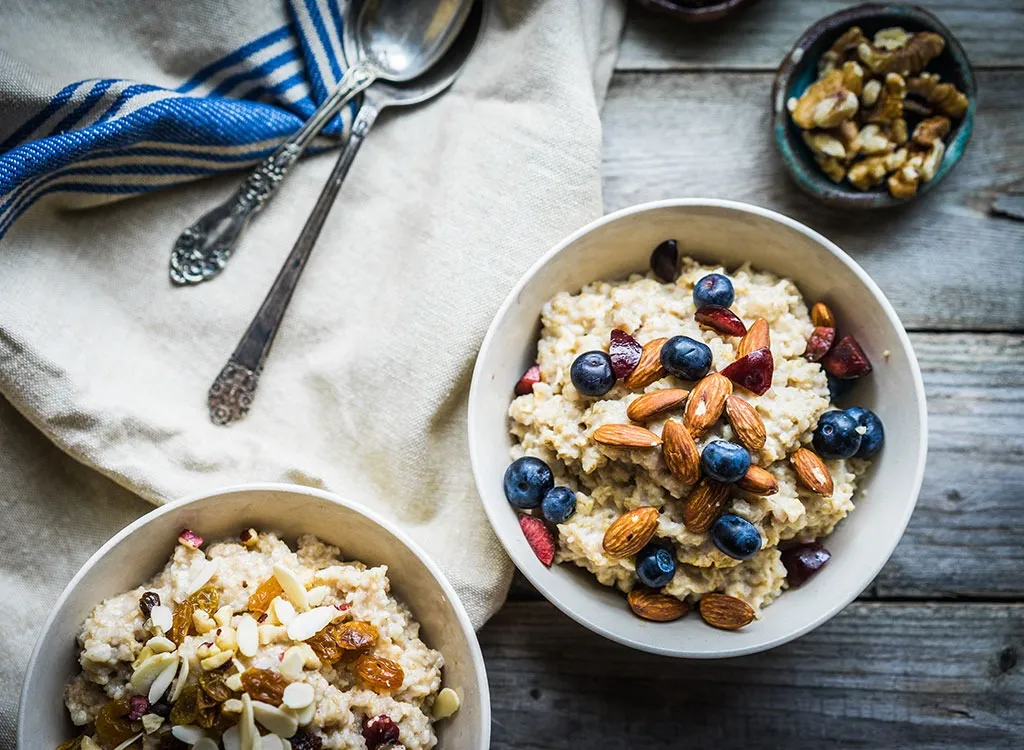
Carbohydrates matter when whittling your waistline. However, now is not the time to drastically curb carb intake. Instead, focus on whole grain foods for weight loss.
Holiday foods are often filled with highly-refined carbohydrates, such as sugar, corn syrup, and white flour, that can cause your body to store fat. Complex carbohydrates, such as those found in whole grains, help to do the opposite.
One study found men and women who replaced refined grain foods with whole-grain foods actually absorbed fewer calories and burned more calories. Total energy loss in the whole-grain group averaged about 100 calories a day compared to those in the refined grain group. A 100-calorie deficit doesn't seem like much, but it amounts to 3,000 fewer calories available to your body each month. This could result in a nearly one-pound weight loss simply for making the switch to whole grains.
How to enjoy: Include at least three servings of whole grains, such as oatmeal, whole-wheat breads and cereals, grains such as quinoa and farro, and popcorn, every day.
Raspberries

They may be petite and sweet, but raspberries are a nutritional powerhouse. When it comes to fruit, raspberries take the prize for fiber, serving up eight grams per cup, about 25% of the suggested daily intake. And adding more fiber to your eating plan can help you drop pounds. Raspberries supply soluble fiber, a type of fiber associated with accumulating less belly fat over a five-year period.
These berries are rich in ellagic acid as well, which is useful in reducing blood cholesterol levels and preventing cancer. And raspberries are an important water source, supplying almost 4 ounces in a cup of fruit! Some of that holiday weight gain you may be experiencing is extra fluid your body accumulated from salty foods. So the water in fluids and foods can help to flush it out of your system.
How to enjoy: Mix fresh or frozen raspberries with plain fat-free Greek yogurt, use raspberries and smoothies and salads, and top whole wheat bread with peanut butter and smashed raspberries instead of jam.
Asparagus
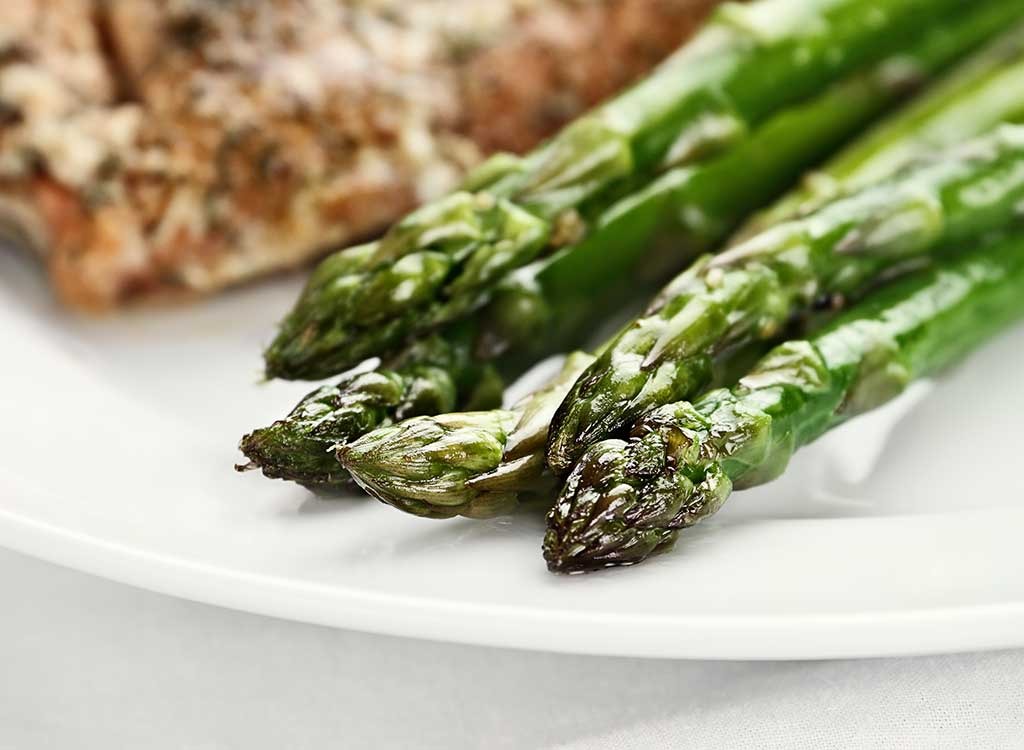
Asparagus is another solid food that helps to battle belly bloat. It contains the amino acid asparagine, a natural diuretic that helps you offload extra fluid.
The vegetable happens to be rich in inulin, a "fermentable carbohydrate." And this is great news for you! Your body cannot digest inulin, and it makes its way to the colon where beneficial bacteria ferment it, producing short-chain fatty acids that resulted in decreased appetite, food intake, and weight loss in overweight people. Inulin-rich foods can crush cravings that often derail dieting, too. In one study, people who consumed a diet rich in inulin experienced more eating satisfaction and reported a reduced desire for sweet, salty, and fatty foods.
How to enjoy: Roast or steam asparagus and use leftovers to salads and omelets, add to pasta dishes, and use in healthier versions of cream of asparagus soup.
Bananas
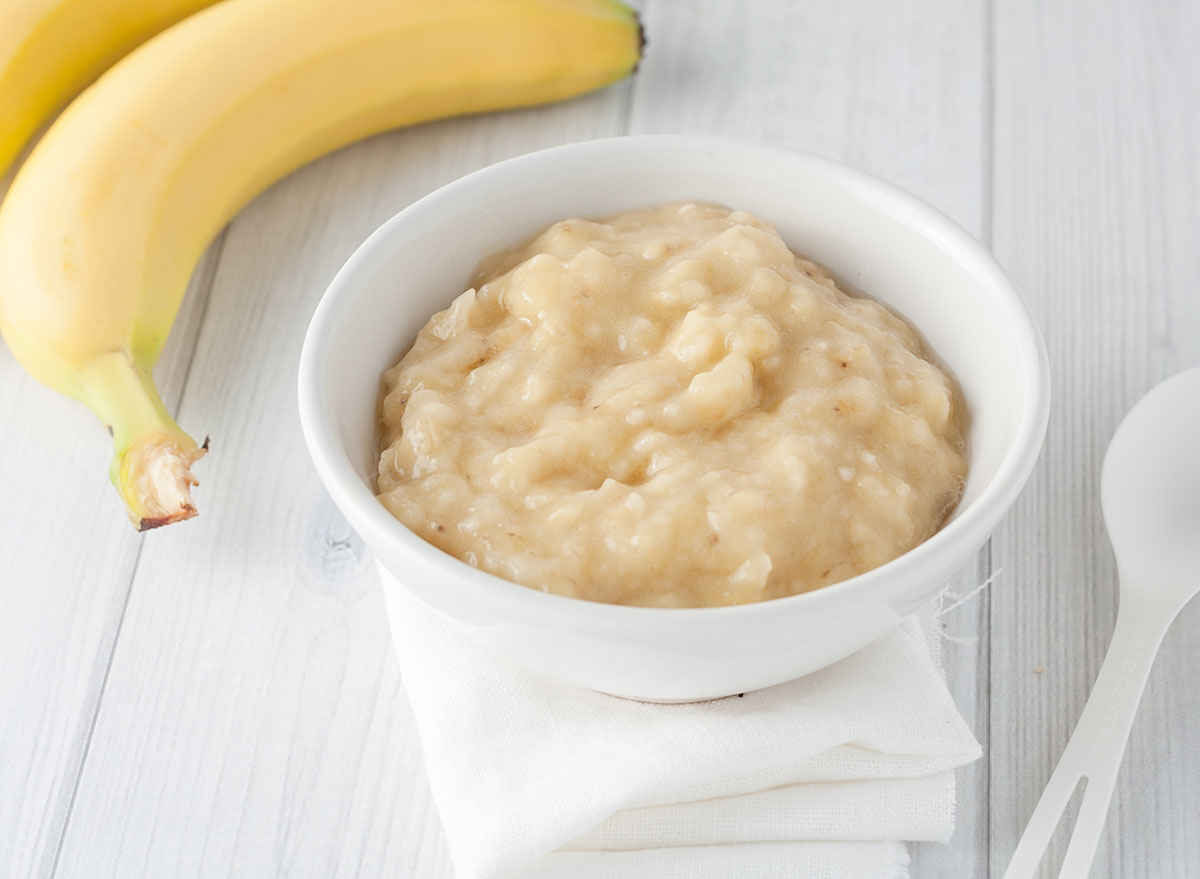
Bananas supply starch, but that's no reason to avoid them when trying to torch abdominal fat. The starch in bananas, which also provide inulin, is a good enough reason to keep this delicious fruit on the menu.
Foods such as white bread, crackers, and pretzels, contain rapidly-digested starch that raises blood glucose levels quickly, causing your body to release insulin in order to return glucose levels to normal. Problem is, insulin also promotes fat storage, and a steady diet of refined grains works against weight loss. Resistant starch, found in bananas and other plant foods, is a different story.
Resistant starch is a fermentable carbohydrate that doesn't increase glucose in the bloodstream. Resistant starch also promotes feelings of fullness, which is always welcome when you're trying to eat less. One study showed that women who combined protein with resistant starch at the same meal felt fuller, had greater eating satisfaction, and burned more body fat than women who ate only foods with protein or resistant starch.
How to enjoy: Sliced with whole-grain cereal and milk, in smoothies, and in pancake batter made by combining two eggs and one banana in a blender or food processor.
